Three Great Bodhisattvas of Wisdom, Compassion, and Power — Manjushri, Avalokiteshvara and Vajrapani.
The Three Great Bodhisattvas represent the three main focuses of Buddhist Practice — to cultivate Wisdom, Compassion and the Power of Enlightened Activity.
Thought of in another way, the Three Great Bodhisattvas represent the Three Main Qualities and Perfections of the Buddha — the three qualities we need to bring into our lives to walk the Enlightened Bodhisattva Path.
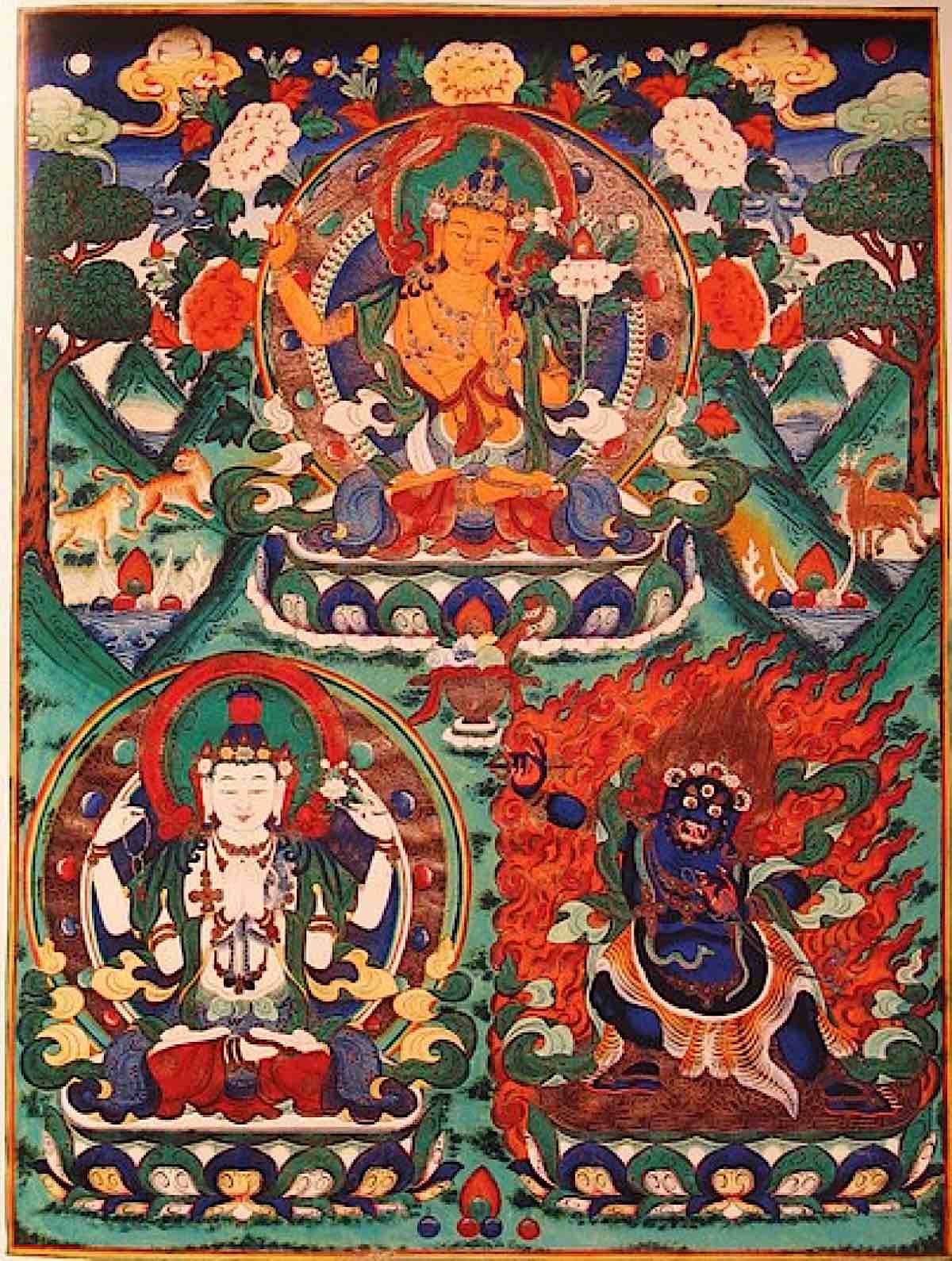
In one beautiful and empowering practice, these are represented by the “Three Lords of the World” — the three great Bodhisattva heroes who promised to remain in Samsara until all sentient beings are rescued — Manjushri, Bodhisattva of Wisdom; Avalokiteshvara, Bodhisattva of Compassion; and Vajrapani, Bodhisattva of Power.
Praise of the Lords of the Three Families
by Jamyang Khyentse Chökyi Lodrö
Oṃ svasti!
You dispel the darkness of wrong view,
And open the lotus of perfect intellect,
Seeing all knowable things as they truly are –
Mañjughoṣa, to you I pay homage!With great love, you look upon us,
And bring freedom from suffering’s shackles,
Always acting for beings’ welfare –
Great Compassionate One, to you I pay homage!You wield the vajra weapon in your hand,
And eliminate all the evil hosts of māra,
You are the powerful, the wrathful –
Vajrapāṇi, to you I pay homage!Through the virtue of offering this praise
To the master-protectors of the three families,
May I and all other sentient beings
Attain the level of enlightenment!
| Translated by Abraham Ta-Quan and Adam Pearcey, 2015.
Three Great Bodhisattvas in Sutra
These great Bodhisattvas speak often in Sutra (Sutta, Pali), usually with folded hands, baring their shoulder to ask Shakyamuni Gautama Buddha an important question. Sometimes, they are the focus of the Sutra, as with Avalokiteshvara speaking (with Shakyamuni Buddha listening) to the Heart Sutra — one of the most important sutras in Mahayana Buddhism.
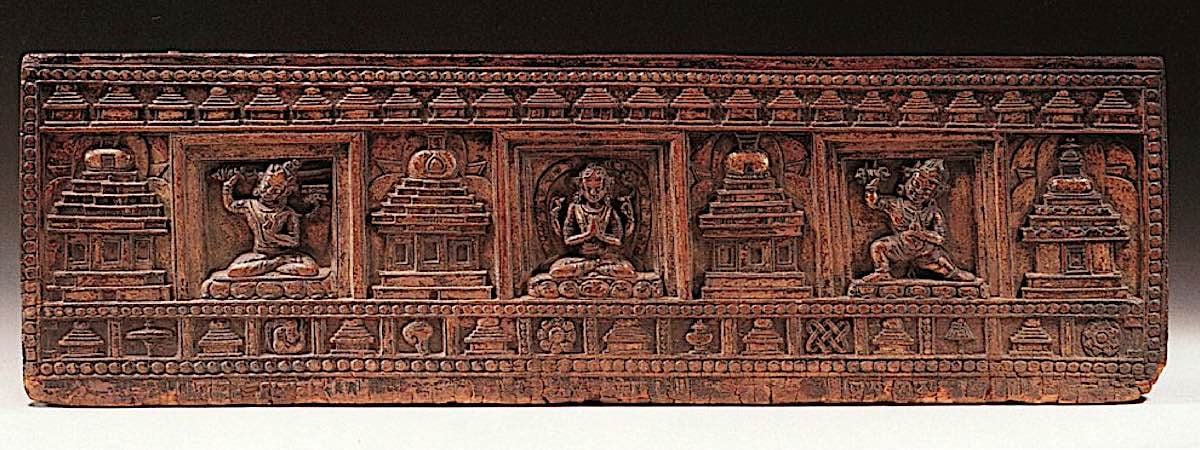
Vajrapani takes a central role as the questioner in the 300-plus pages of the Mahavairocana Sutra. He is also Shakyamuni’s great defender in early Pali Sutta. [See this feature on Vajrapani>> ]
Manjushri, of course, is central in all forms of Mahayana Buddhism and many Sutras and Tantras, as the supreme Wisdom of all the Buddhas manifested.
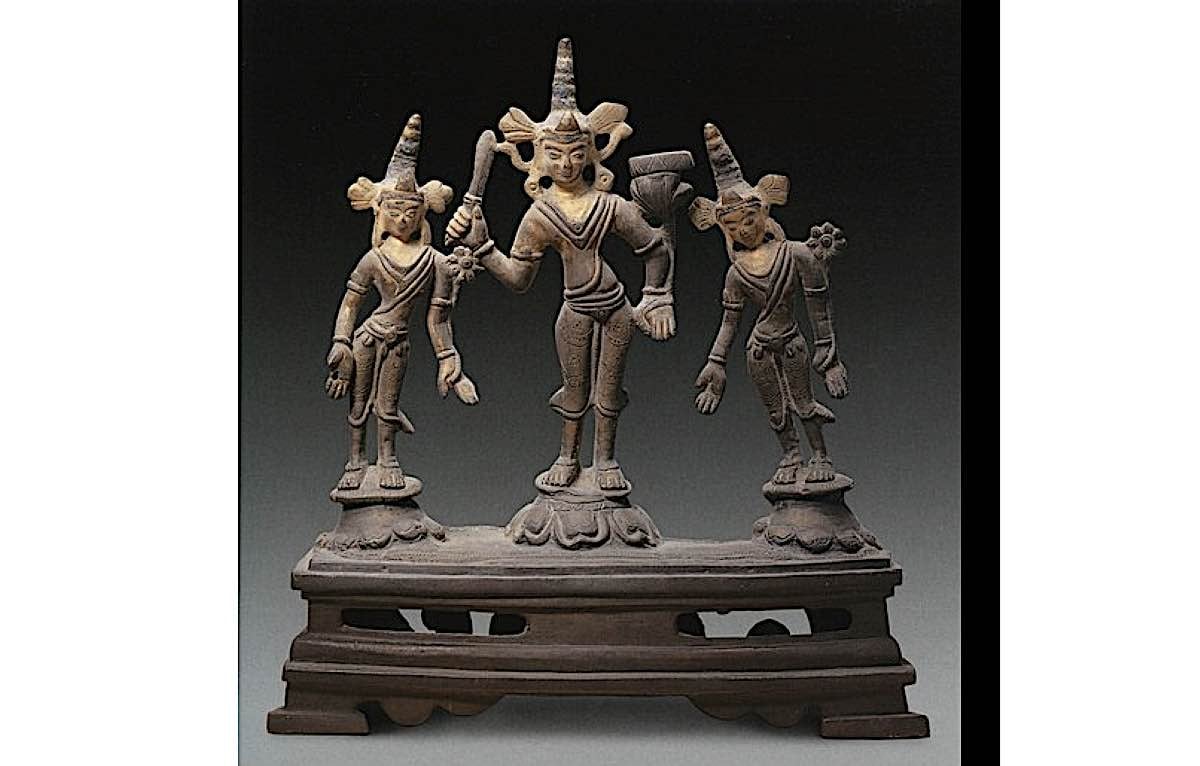
Why these Three Out of the Eight Great Ones
In Buddhism, especially Mahayana, the three great Bodhisattvas, called the Three Lords of the World are the most important practice. Why? Because they remain in our world, working to help us.
There are Eight Great Bodhisattvas, traditionally, in Buddhism — [see this special feature on the Eight Great Bodhisattvas>>] — so why, in many temples and practices are these three singled out. Because these three represent the three great qualities we aspire to manifest in our practice and lives.
Although the main focus seems to be on Wisdom and Compassion — the two great “wings of Enlightenment” —Manjushri (Manjusri) for Wisdom, Avalokiteshvara (Chenrezig, Guanyin) for Compassion — equally important is the key practice element of Buddhism, karmic activity.
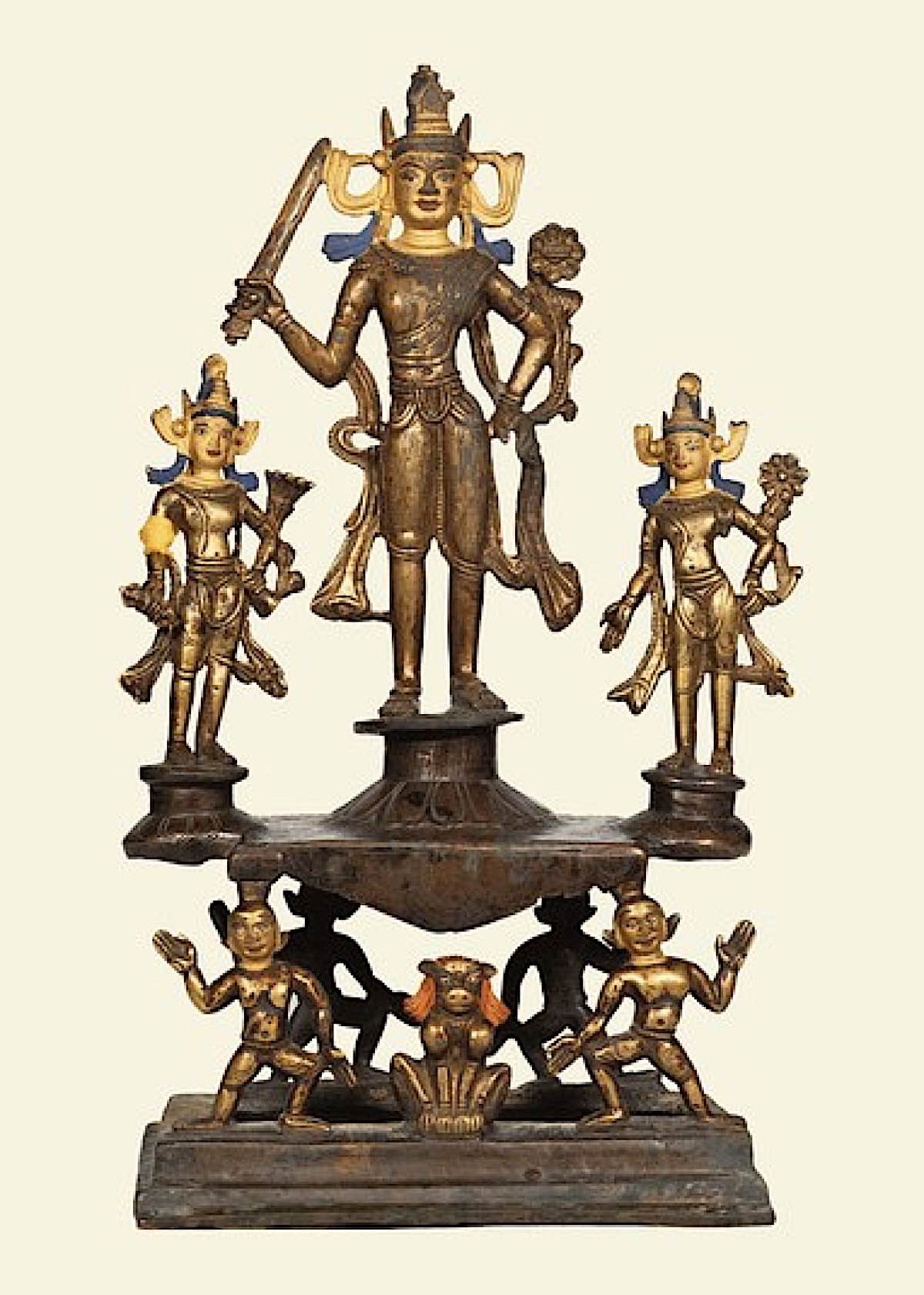
The first teaching of the Buddha in Deer Park was on the Four Noble Truths and Eightfold Path — which are almost entirely focused on karma and actions and precepts. This makes Power the third Bodhisattva or Buddha characteristic, embodied by Vajrapani — the activity of karma and Enlightened “Power.” Due to his importance, Vajrapani appears the most powerful of all the Bodhisattvas, wielding his great lightning bolt Vajra. [For a video on the Four Noble and the Eightfold Path>>]
Related features for more information:
- For an in-depth feature on the Avalokiteshvara, see>>
- For an in-depth feature on Manjushri, see>>
- For a feature on Vajrapani, see>> Vajrapani, the Hand of the Buddha>>
- For a written feature on the Eightfold Path, see>>
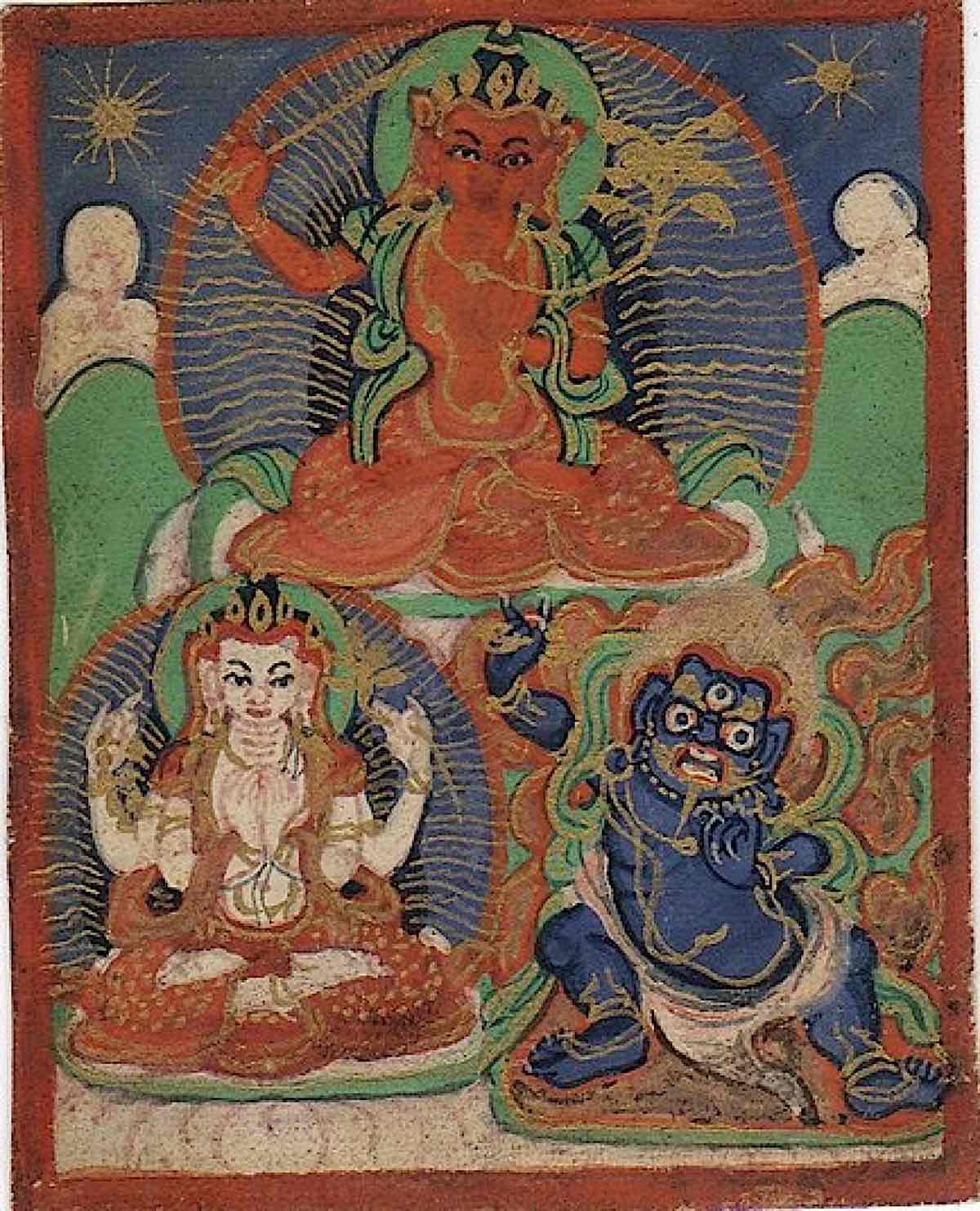
Wisdom and Compassion — Plus One!
Wisdom and Compassion are the two essential qualities required for Enlightenment. It is said that if one has Wisdom but not Compassion, one will become a Pratyekabuddha — an “enlightened loner” who works only for his own liberation. If one has compassion but not wisdom, one will become a Bodhisattva — one who works for the liberation of all beings. Enlightenment requires both.
The Three Lords of the World embody these two qualities in perfect balance and are therefore the most important practice for those seeking Enlightenment — with the addition of “power” and activity, since “karma” or activity is the force that traps all beings in Samsara.
Featured: In Gelugpa Buddhism, the importance of the Three Bodhisattvas are embodied in the great Lama Tsongkhapa, who is the emanation of all three. For Gelugpa practitioners, practicing Lama Tsongkahap is the same as practicing the Three Great Lords of the World.
Video of Lama Tsongkhapa’s Migstema, which is a praise to his three emanations and to the great Buddha from the Land of Snows:
Manjushri, Bodhisattva of Wisdom
Manjushri is the Bodhisattva of Wisdom, the embodiment of all the Buddhas’ wisdom. He is often shown holding a sword in his right hand which cuts through conceptual delusions, and a lotus blossoms in his left hand which represents the purity of his mind.
He is usually portrayed as a young prince, beautiful and serene, with golden skin. His name means “Gentle Glory”. He is often called “Youthful Manjushri.”
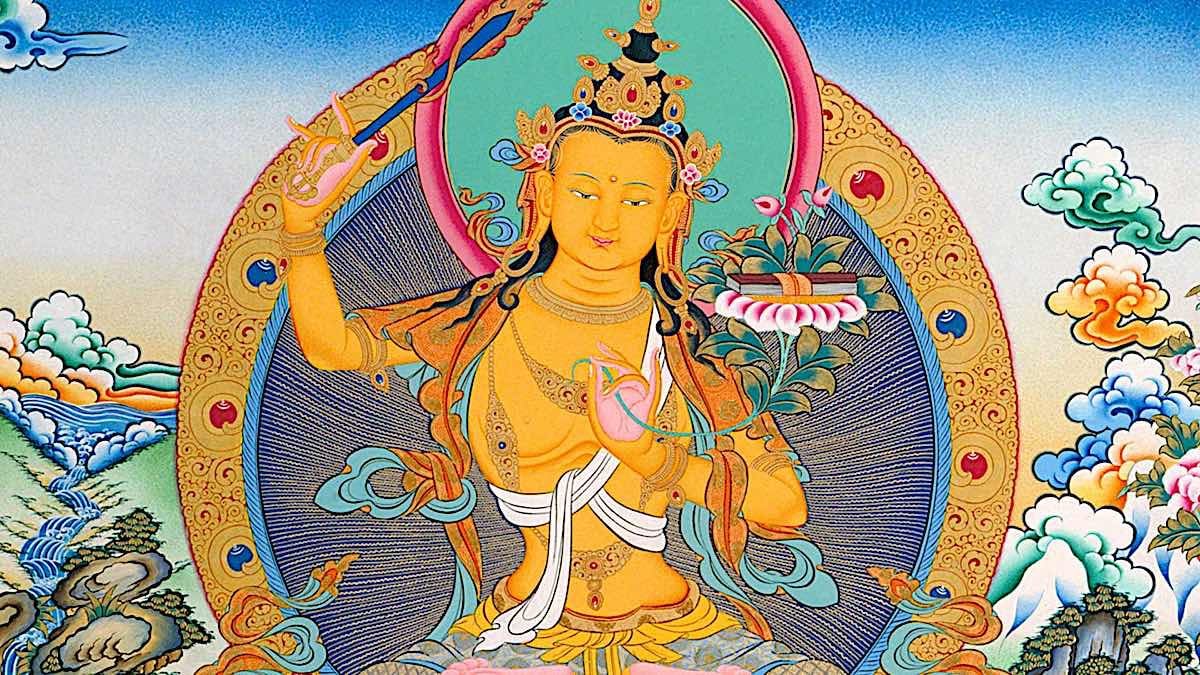
- For a feature on the “many faces of Manjushri, see>>
- For a complete feature on “Youthful Manjushri” see>>
- For a feature on the wrathful form of Manjushri, Yamantaka, the Destroyer of Death, see>>
- For a documentary feature on Lama Tsongkhapa, who embodies the Three Great Ones, see>>
Avalokiteshvara Chenrezig, Bodhisattva of Compassion
Avalokiteshvara (Chenrezig in Tibetan) is the Bodhisattva of compassion and the patron deity of Tibet. He is often shown with eleven heads, representing his all-seeing wisdom, and a thousand hands, representing his ability to help all beings.
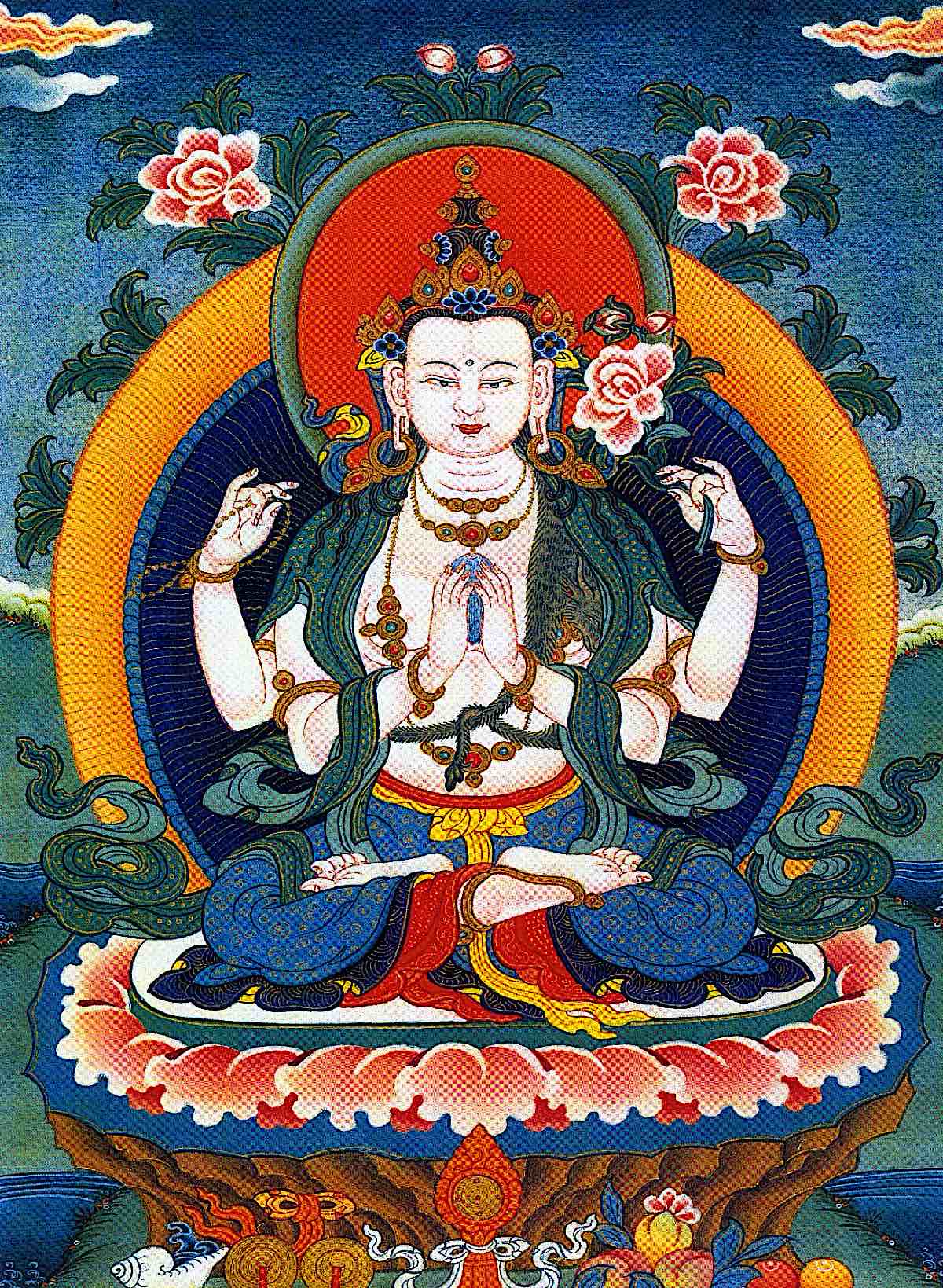
His name often translates from Sanskrit to English as, “Lord who Looks Down on the Suffering of All Beings”.
Avalokiteshvara has many forms including “the Pacifier of War” — in the 25th chapter of the Lotus Sutra it specifies he can appear as any form of a human, animal, bird, god, zombie, monster, and all of the other Bodhisattvas and Buddhas! [To read the 25th chapter on Avalokiteshvara Guanyin, see>>]
Vajrapani, Bodhisattva of Power
Vajrapani is the Bodhisattva of Power, the embodiment of the power of all the Buddhas. He is often shown holding a vajra (thunderbolt) in his right hand and a lotus blossom in his left.
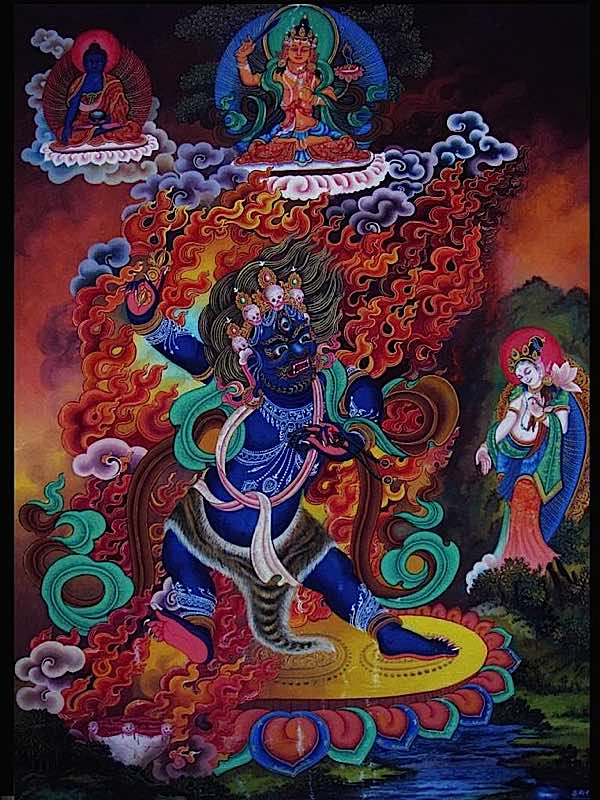
He is usually portrayed as a muscular man, with dark skin, representing his power. His name means “Lord of the Vajra”. He also has a “wrathful form” where his face transforms into the angry face of an awesome Raksha being, his muscles bulge and he “hulks” up into the Incredible Hulk aspect of the Bodhisattva of Power.
Together, the Three Lords of the World
The Three Great Bodhisattvas: Three Lords of the World — Manjushri, Bodhisattva of Wisdom, Avalokiteshvara Chenrezig, Bodhisattva of Compassion, Vajra are therefore the most important practice for those seeking Enlightenment. They embody the three essential qualities required for Enlightenment — Wisdom, Compassion and Power — in perfect balance.
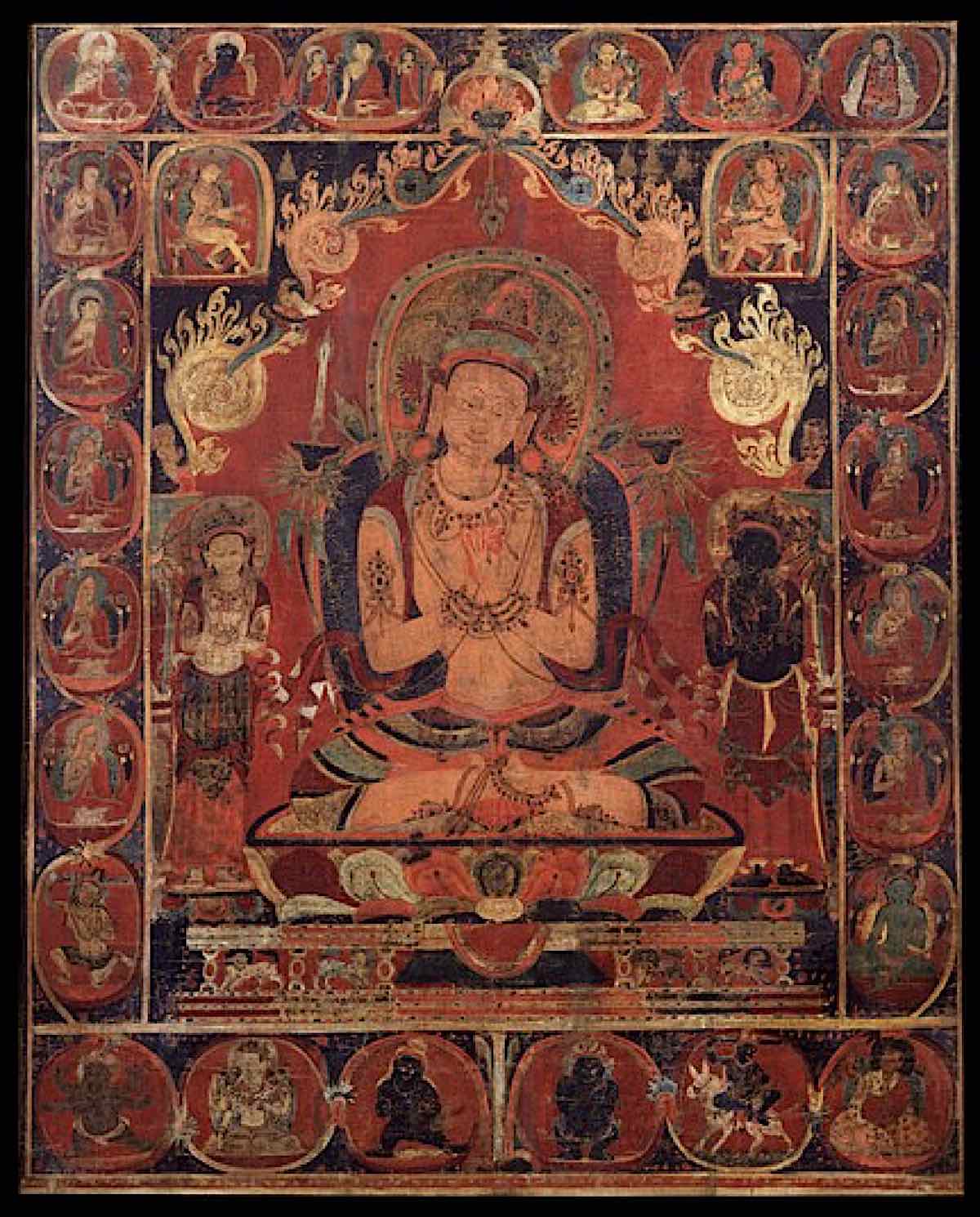
In addition, they are also the most important practice for those seeking to help others, since they remain in our world, working to help us. Their compassion and power are always available to those who call on them.
The Three Muskateers of Buddhism: All for One and One for All
This famous line, “Tous pour un, un pour tous” (All for one, and one for all) is a motto traditionally associated with the titular heroes of the novel The Three Musketeers written by Alexandre Dumas père, first published in 1844. This could equally apply to the Three Great Bodhisattvas — the Three Muskateers of Buddhism. Like the Muskateers in the literary masterwork, they are heroes working to benefit the downtrodden and suffering. Like the Muskateers, they are the essence of One for All, All for One.
In Buddhism, the concept of Shunyata underscores that all Bodhisattvas and Buddhas are of One Essence. Even though we say Avalokiteshvara represents Compassion and Manjushri Wisdom and Vajrapani is Power, they are all fully Enlightened Beings. They continue to work in our world — hence, the term Bodhisattva, the heroes who stay in our world to help us even though they are fully Enlightened — and they may each have a focus, but all are complete Buddhas. The essence of One. Literally, All for One and One for All.
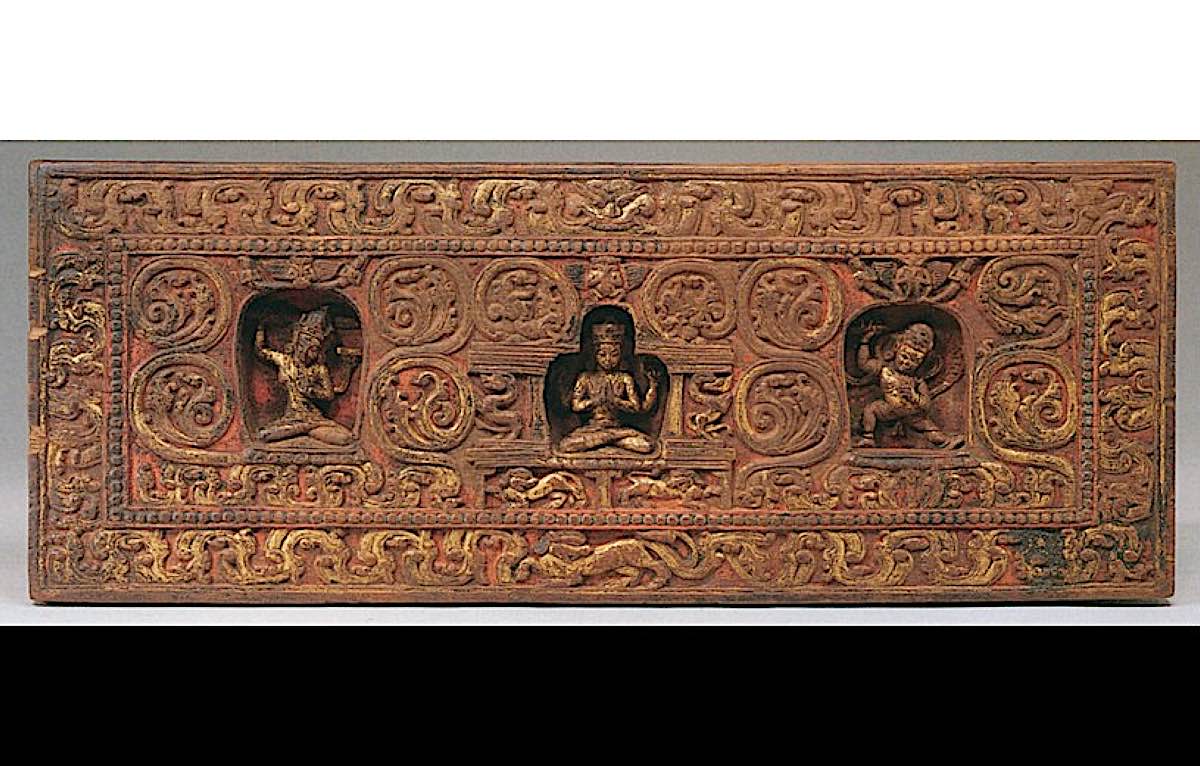
Representations of the Three Lords
On some Thangkas you’ll see Manjushri in the center and Avalokiteshvara left with Vajrapani right. On others, Avalokiteshvara is in the center. Others, Vajrapani. This is a matter of focus. If your practice is especially focused on Wisdom, Manjushri may appear in the center — this is the most common assembly, with Avalokiteshvara left and Vajrapani right.
If your practice is focused on compassion, Avalokiteshvara will appear in the centre. If focused on power, Vajrapani.
The important thing to remember is that they are all One Essence, and that each is a completely Enlightened Buddha — even though they continue to work in our world to help us achieve Enlightenment. They embody the Three Pillars of Buddhism — Wisdom, Compassion and Power — in perfect balance. And they are always available to help us, if we only call on them.”
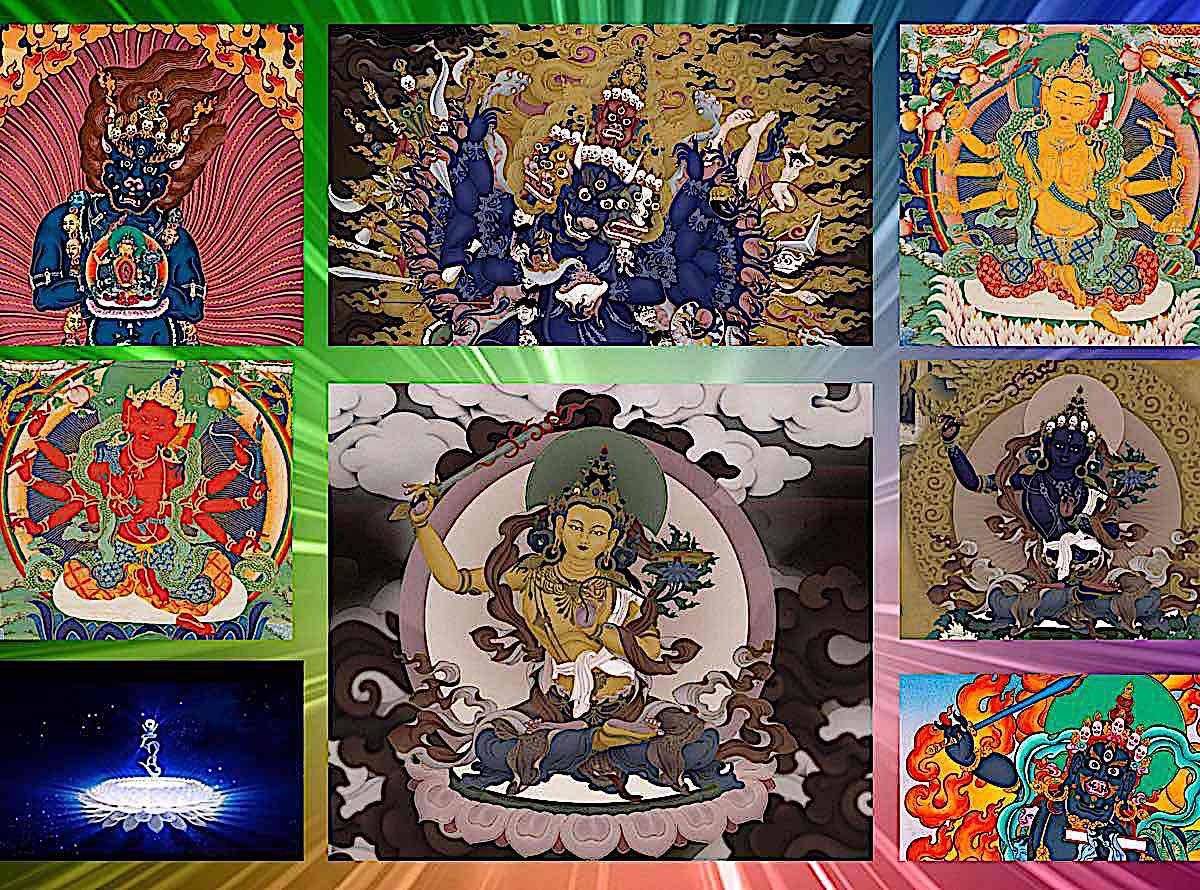
3 Bodhisattvas, 3 Aspects of Practice
The Three Great Bodhisattvas: Three Lords of the World — Manjushri, Bodhisattva of Wisdom, Avalokiteshvara Chenrezig, Bodhisattva of Compassion, Vajrapani the Power of Enlightened Activity (Karma) are important for all Buddhist practitioners to keep in mind. By focusing on the Three Great Lords of the World, we focus on the most important elements of our practice: Wisdom, Compassion and the Power of Right Actions in the world.
This way, we too become Bodhisattvas, acting in the world with wisdom and compassion to help others, practicing towards our own inevitable Enlightenment with a view of helping all sentient beings become Enlightened.
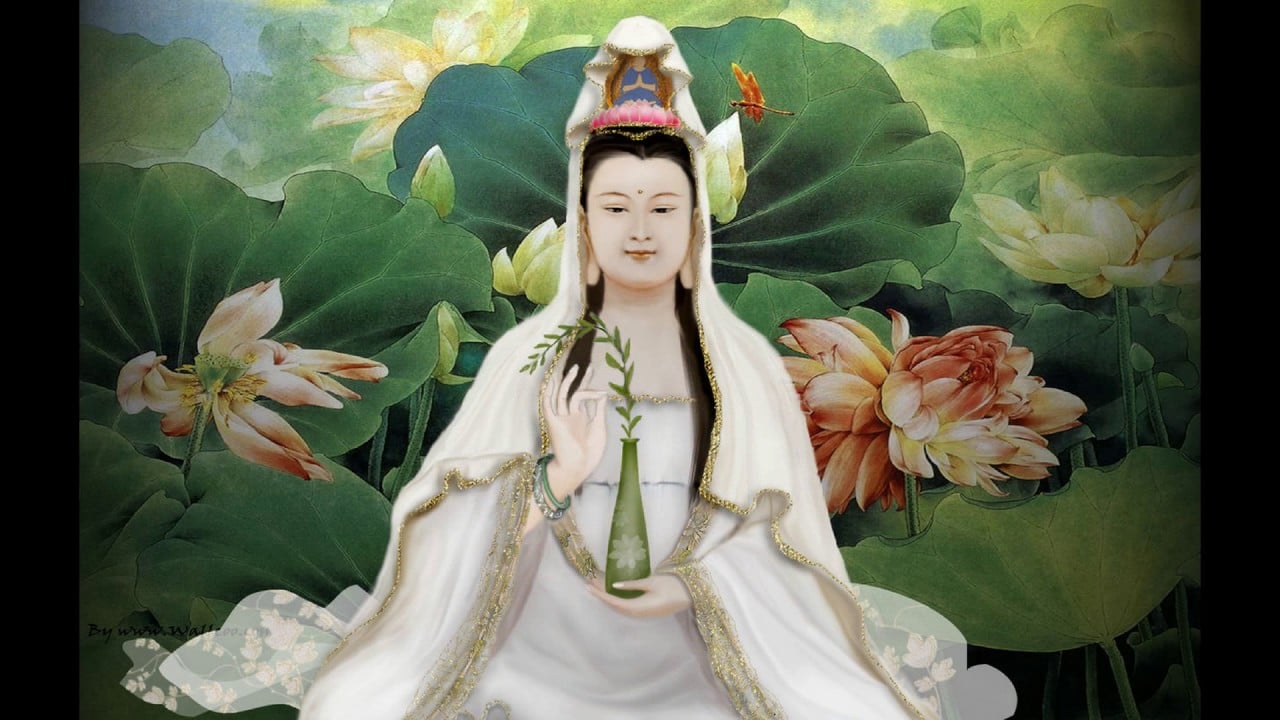
Body, Speech and Mind
The Three Bodhisattvas also represent the Body, Speech and Mind of the Buddha. Especially in Mahayana practices, we take refuge in Buddha, Dharma and Sangha, but also the Body, Speech and Mind of the Buddha. You can think of their manifestations in this way — although this is overly simplified and summarized:
- Vajrapani as the Body of the Buddha
- Avalokiteshvara as the Speech of the Buddha
- Manjushri as the Mind of the Buddha
In Buddhist practices, these are associated with the Three Jewels, typically:
- Buddha — Manjushri (mind of the Buddha)
- Dharma — Avalokiteshvara (speech of the Buddha)
- Sangha — Vajrapani (body of the Buddha).

Practicing the Three Lords
The simplest way to practice the Three Lords is to first take Refuge in the Three Jewels — Buddha, Dharma and Sangha. It can be helpful to think of Avalokiteshvara as representing the Buddha (above all, the Buddha is compassion) and Manjushri representing the “Dharma” (Wisdom is the essence of Dharma teachings and writings), and Vajrapani representing the Sangha (who are the positive karma activities of Buddhists.) This way, our refuge has an extra layer of meaning.
The basic practice is straightforward:
- Take Refuge in Buddha, Dharma and Sangha, the Three Jewesl
- Visualize the Three Bodhisattvas (if you can, otherwise, just know they are there)
- Make offerings — either mentally, or actual
- Meditate with the sound of the three mantras of the Three Great Ones.
- Dedicate the Merit of Your Practice to the Benefit of All Sentient Beings.
Refuge in the Three Jewels
A simple refuge is
I take Refuge in the Buddha, the Dharma, and the Sangha until I attain enlightenment for the benefit of all sentient beings. I take Refuge in Avalokitesvara, the Compassion of the Buddhas, and Manjushri the Wisdom of the Buddhas, and Vajrapani, the Activities of the Buddhas, until I attain Enlightenment.
- For a feature on Taking Refuge in the Three Jewels, see>>
- For a beautiful video (great for use in practice) with a chanted for of the Refuge and Four Immeasurables, see>>
Visualize the Three Great Bodhisattvas
Next, we usually visualize the Three Great Ones, Avalokiteshvara (Chenrezig Guanyin), Manjushri and Vajrapani in front of us. If we can’t do that, we just say, something like,
In front of me, appears Avalokiteshvara, Manjushri and Vajrapani, the Three Great Lords.
Then, you can either make offerings in the form of mental offerings — most importantly offering all your virtuous deeds and conduct to the Three Great Ones — and perhaps something symbolic like incense or water bowls.
Trying to hold their visualization stable in your mind, you can focus your intentions with the Mantras of the Three Great Ones. Their mantras contain the essence of the Bodhisattvas: compassion, wisdom and power. You can say each 108 times, as is tradition, or you could do a rhythm of 7, 7,7 then 1,1,1, then 7,7,7 — or whatever suits your mind. Each mantra is only six or seven syllables each.
Visualizing Color
It can be helpful to visualize colors of light emanating from your visualized Bodhisattvas, entering your own body, together with any recitation. Studies have indicated the powerful effects of visualization on the mind. [For a feature on the power of visualization, see>>]
If you are visualizing, usually you’ll imagine colored lights coming from the visualized Bodhisattvas and entering your body, empowering you. There are THREE ways to do this, depending on your purpose and how well you can visualize — and, of course, depending on your teacher’s advice. (These are different ways to visualize from different traditions.)
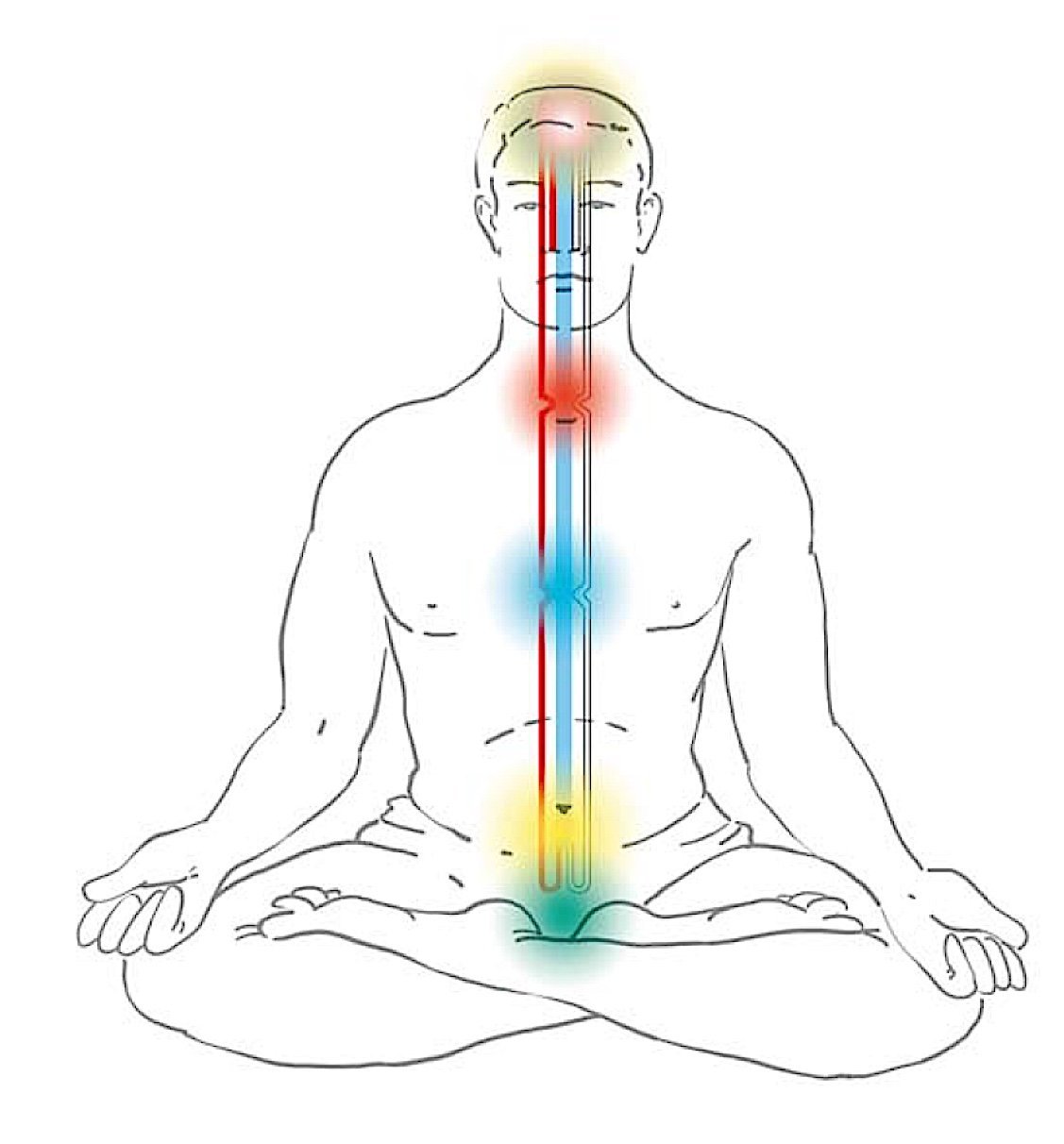
The simplest light visualization: Body, Speech, Mind
The most straightforward version of visualization of empowering lights is to focus on the associations of Body, Speech and Mind. You visualize Body, Speech and Mind of the Enlightened Ones as White, Red and Blue respectively — unless your tradition teaches a different method. Normally:
- Body as WHITE light enters your crown and empowers your crown chakra (top of your head).
- Speech is RED light entering your throat chakra.
- Mind is BLUE Light entering your heart — in Buddhism, the mind (not the brain) is seated symbolically at the heart, the centre of our compassion.
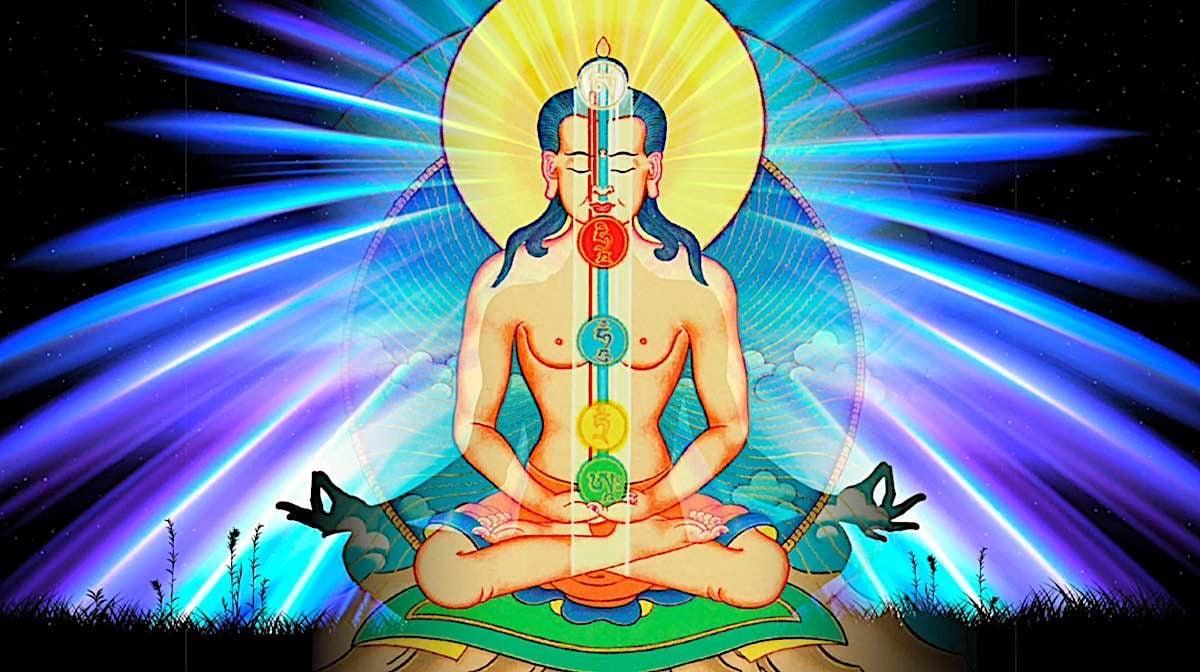
White light usually emanates from the crown, red from the throat, and blue from the heart. So, if you’re going to “complicate” your visualization to include the “activity” aspect of your purpose, you modify this so that the specified activity color (see below) is coming from the appropriate chakra of your Bodhisattva.
In other words, even if Avalokiteshvara is visualized as white, if you are visualizing “magnetizing” and “compassionate” power emanating this would be red, coming from Avalokiteshvara’s throat. If you are visualizing a more wrathful supressing energy, this is “blue light from the heart” of Avalokiteshvara (even though he is still white, the light from his heart is blue.)

Regardless of the Color of the Buddha
Regardless of the color of the Buddha being visualized, the powerful light you visualize entering your charkas depends on the activity you are focusing on, and therefore the source of the light. Typically — except for specific practices as instructed by a teacher — when the light is visualized coming from the
- crown (head) of the Buddha, it’s white light for the body, symbolized by the White Om syllable
- throat chakra of the Buddha, its red light for speech, symbolized by Red Ah syllable
- heart chakra of the Buddha, its blue light for the mind, is symbolized by a Blue Hum syllable.
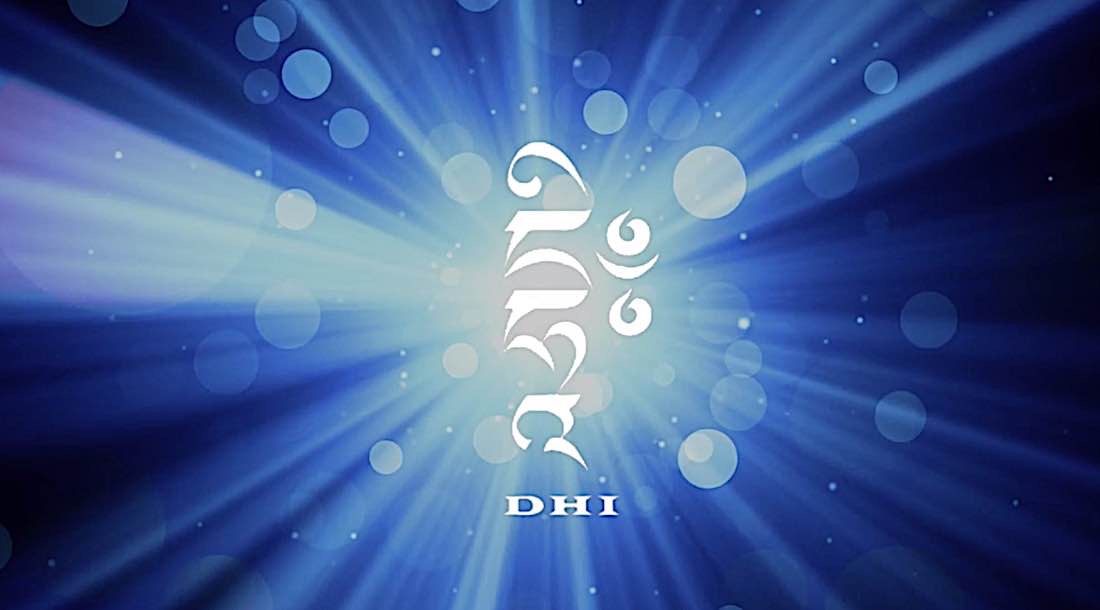
Visualizing light colors by “purpose”
In other words, regardless of the “color” of the Buddha, the emanated light visualized is only determined by the chakra (crown, throat, heart) or the purpose.
If you are visualizing light by purpose, it’s slightly different:
- White — pacifying activities, such as pacifying disease, anger — and traditionally, for long-life practices and purification — it still emanates from the crown.
- Red — magnetizing and attracting activities, such as drawing auspiciousness to you — it still emanates from the throat.
- Yellow or Gold — auspiciousness — this one usually emanates from your navel.
- Blue — wrathful activities, such as suppressing energies, diseases, obstacles — it still emanates from the heart.
In other words, visualize one of these two ways, depending on your purpose and needs.
If all of this is too difficult, you can “skip” the visualizations for now and focus on just the mantras, while, perhaps, staring at a picture, thangka or statue of the Buddhas in front of you.

Red light emanations for Avalokiteshvara
Avalokiteshvara can appear in white, red and other colors, but the light for Speech and Compassion — is the color of the throat chakra in Buddhism, which is the color of Amitabha’s Padma (Lotus) family. Their focus is compassion. Red light is also the power of “magnetizing” — drawing good things towards you.
In this form of meditation, you’d visualize red light coming from the throat chakra of Avalokiteshvara (he is typically white, but the light coming from his throat is red!)
Blue light emanations for Manjushri?
Although we normally visualize Manjushri himself as yellow or white — he also has a black-blue form just to totally confuse you! — in this meditation, you see his Wisdom light as Blue (not his body, but you see the light emanating from his body coming from his heart as blue light.) Why Blue? Because in Buddhism, the heart chakra is the seat of the subtle mind — which is always Blue — often symbolized by a Blue Hum syllable.
White light emanations for Vajrapani?
Even more confusing, Vajrapani is blue, but you visualize the light coming from the crown chakra of Vajrapani, as white light, representing the body/power of the Buddha. Vajrapani is still visualized blue, but the light from his crown is white.
Third option: Everything is Oneness
The easiest, perhaps, is to visualize all three lights coming from all three Bodhisattvas crown, throat and chakra — then you have it all! Although the former two methods traditionally reinforce the psychology of colors and powers, visualizing everything coming from everyone reinforces your understanding of Shunyata — that all Bodhisattvas — and you, yourself — are Oneness.
If you’re not visualizing just focus on perfectly pronouncing the mantras.
Manjushri’s Wisdom Mantra
Manjushri’s mantra is famous for wisdom. There have even been reviewed studies on the impact of the Arapachana mantra (Manjushri’s mantra nickname) on students and exam results! [For a full feature on the “Cognitive Study” indicating the benefits of Arapachana see>>]
His mantra is the six of the core Sanskrit syllables followed by Dhi (the seed syllable for Manjushri).
OM AH RA PA TSA NA DHI
The first six syllables more or less sound like Arapachana, which is why it is often called by this name. Dhi is the seed syllable of Manjushri and ends the mantra. The Tsa sounds a bit like Cha or more specifically T-S-Cha rolled together.
When you finish your series of Om Ah Ra Pa Tsa Na Dhi you then repeat the Dhi over and over, softer and softer until you run out of breath. This symbolizes fading into the Emptiness of Oneness and Shunyata. [Empty of Ego, not of existence. For a feature on Emptiness – Shunyata, see>>]
As you chant this mantra, normally you’d visualize Blue light which represents the mind for the general symbolism of Enlightened Mind. Or, if your prefer, the activity you are focused on (per section above.)
Avalokiteshvara’s Compassion Mantra
Most famous of these is Avalokiteshvaras Mani Mantra:
Om Mani Padme Hum
In Tibetan pronunciation, if you prefer this, it would be: Om Mani Peme Hung
Video of the Om Mani Padme Hum chanted by the amazing Yoko Dharma:
As you chant his mantra, imagine or visualize red light — red is the color of Speech and Dharma and is the color of the Padma Compassion family of Amitabha, to which Avalokiteshvara belongs. The red light streams from the visualized Bodhisattva in front you, and enters your throat chakra.
Vajrapani’s Power Mantra
Now empower the entire practice with Vajrapani’s powerful mantra. This represents Enlightened activity. It may seem counter-intuitive, since Vajrapani is visualized as Blue, but if you’re meditating on Vajrapani as the Body aspect) you can use White light entering your crown, as with Vajrasattva practice. You might visualize the white light coming from the crown chakra of Vajrapani’s visualized form. (Or, if you are focusing on his wrathful power, you certainly can choose to visualize blue light coming from his heart.)
His mantra is
Om Vajrapani Hum
The Eight Great Bodhisattvas
The Eight Great Bodhisattvas tend to have focuses, just like the Great Three above — remembering that all embody the same universal qualities. You could summarize their characters this way:
- Manjushri — embodies Buddha’s wisdom (prajna)
- Avalokiteshvara — embodies Buddha’s compassion (Karuna)
- Vajrapani — embodies Buddha’s power
- Maitreya — embodies Buddha’s activity (He is also the “Future Buddha”)
- Kshitigarbha — embodies Buddha’s merits and the “richness” derived from merits
- Samantabhadra — embodies the aspirations of Buddha and the practice of prayers and offerings.
- Sarvanivarana-Vishkambhin — embodies Buddha’s qualities and thereby purifies obstructions
- Akashagarbha — embodies Buddha’s blessings and thereby purifies negativities
The Twenty-Five Bodhisattvas from Sutra
According to the Sūtra on Ten Methods of Rebirth in Amitābha Buddha’s Land (十往生阿彌陀佛國經) the 25 Bodhisattvas asre:
Ākāśagarbha
Anantakāya
Avalokiteśvara
Avataṃsakarāja
Bhaiṣajyarāja
Bhaiṣajyasamudgata
Candraprabharāja
Dharmeśvara
Dhāraṇī
Divākararāja
Gaṇaratnarāja
Girisāgaramati
Guṇagarbha
Mahāsthāmaprāpta
Maheśvararāja
Mahātejarāja
Raśmiprabharāja
Ratnagarbha
Samantabhadra
Samādhirāja
Samādhīśvararāja
Siṃhanāda
Śuklahastarāja
Vajragarbha
Vajrapani
2 thoughts on “Three Great Bodhisattvas of Wisdom, Compassion, and Power — Manjushri, Avalokiteshvara and Vajrapani.”
Leave a Comment
More articles by this author
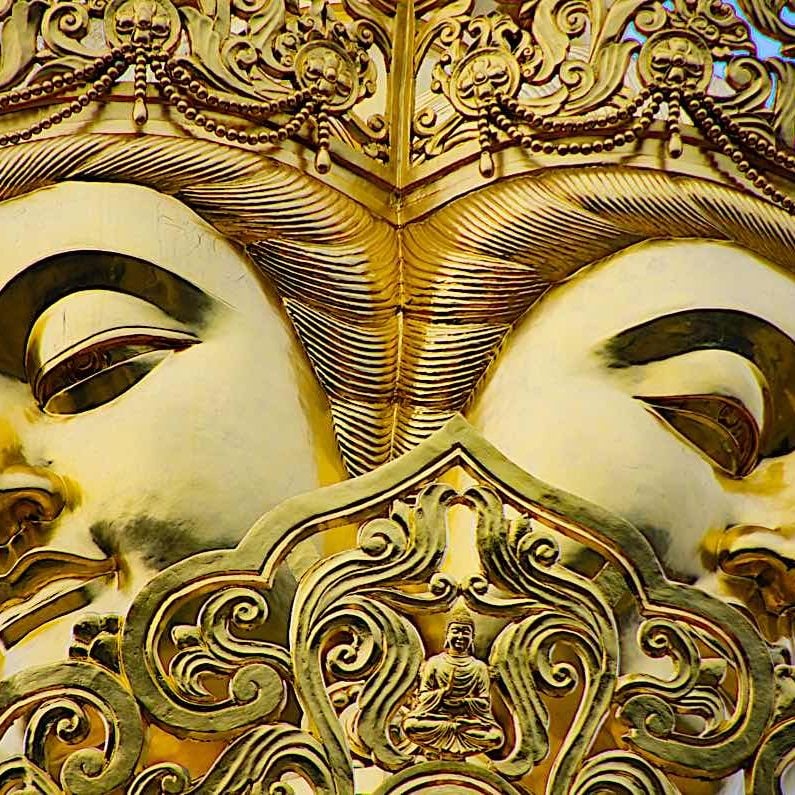
Samantabhadra’s The King of Prayers is the ultimate Buddhist practice how-to and itself a complete practice

Chintachakra White Wish-Granting Wheel Tara: The All-in-One Mother of Buddhas in Vajrayana Buddhism – Her Significance, Mantra and Why Her Practice is Essential
Search
Latest Features
Please support the "Spread the Dharma" mission as one of our heroic Dharma Supporting Members, or with a one-time donation.
Please Help Support the “Spread the Dharma” Mission!

Be a part of the noble mission as a supporting member or a patron, or a volunteer contributor of content.
The power of Dharma to help sentient beings, in part, lies in ensuring access to Buddha’s precious Dharma — the mission of Buddha Weekly. We can’t do it without you!
A non-profit association since 2007, Buddha Weekly published many feature articles, videos, and, podcasts. Please consider supporting the mission to preserve and “Spread the Dharma." Your support as either a patron or a supporting member helps defray the high costs of producing quality Dharma content. Thank you! Learn more here, or become one of our super karma heroes on Patreon.
Lee Kane
Author | Buddha Weekly
Lee Kane is the editor of Buddha Weekly, since 2007. His main focuses as a writer are mindfulness techniques, meditation, Dharma and Sutra commentaries, Buddhist practices, international perspectives and traditions, Vajrayana, Mahayana, Zen. He also covers various events.
Lee also contributes as a writer to various other online magazines and blogs.




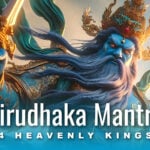
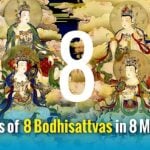
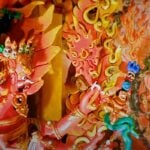

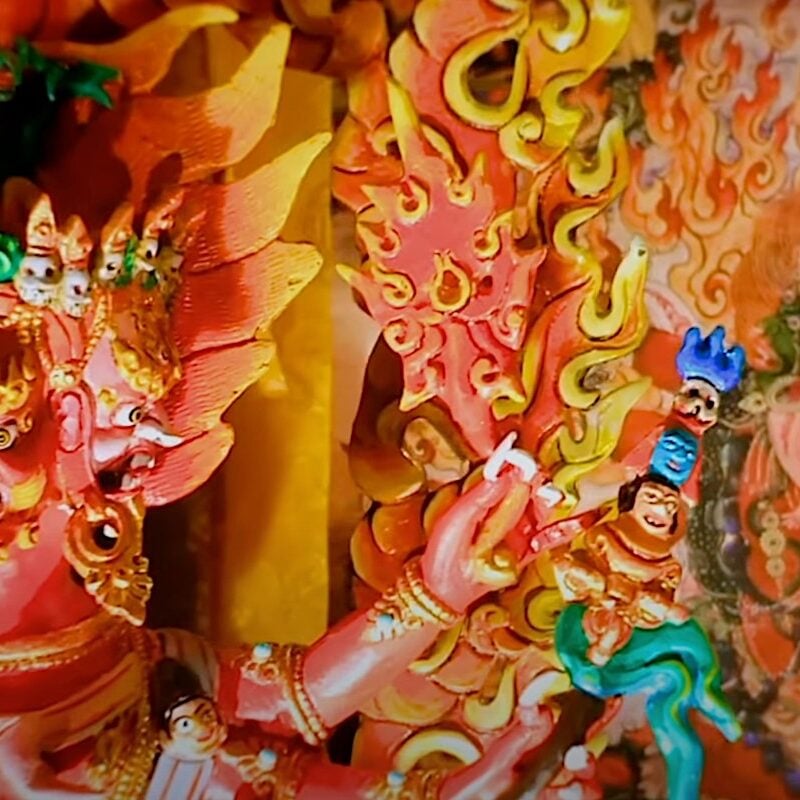




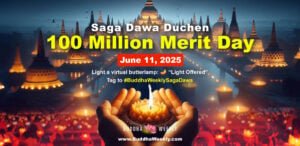
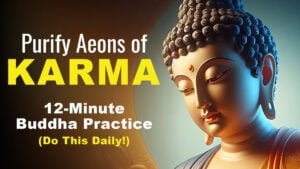


Thank you for such wonderful blessing of Buddha teaching
Thank you!